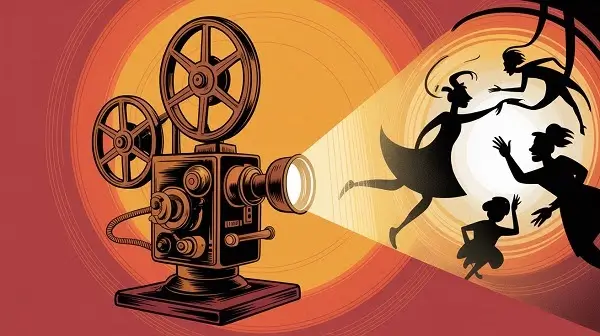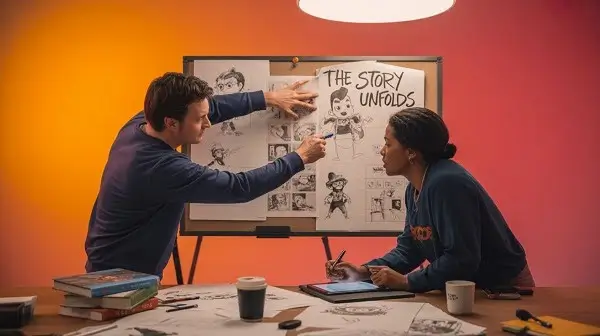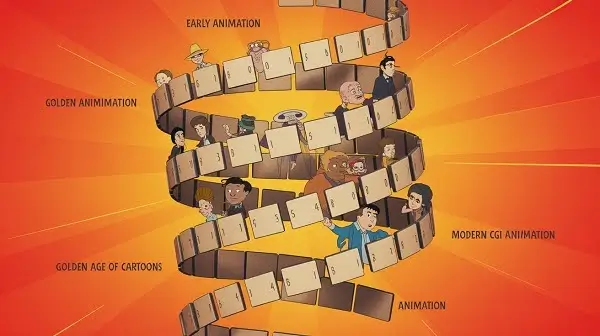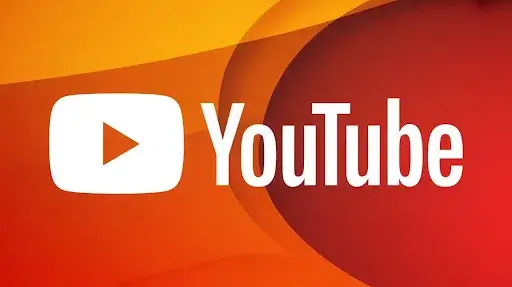A body stretching past the laws of physics. A sketched grin that feels warmer than a real actor’s smile. A split second where sound, motion, and color lock together so well that you stop noticing the screen. That’s the grip of storytelling in animation. It isn’t “just cartoons.” It’s a blend of art, psychology, and technical craft designed to stay with you.
Animation has never been limited to entertaining kids. It can break down complex ideas in seconds, stir feelings instantly, and make brands unforgettable. No surprise that streaming platforms, advertisers, and educators all lean on it more than ever.
At Prolific Studio, we’ve seen a quick clip carry more weight than a thousand slides. A simple concept becomes something you remember long after. That’s one reason businesses often choose to hire 3D animation experts; they know the difference lies in how technical skill and emotion meet.
The History of Storytelling in Animation
From Fireside Tales to Moving Frames
Before films or software, stories were shared face-to-face, usually around firelight. No books, no cameras. Just spoken words carried from one generation to the next. Those tales set values, preserved history, and entertained. Later came writing, theater, paintings, and performance.
Animation shifted the ground. A storyteller was no longer limited by props or actors. Characters could float, bend, and change in ways real people never could. The history of storytelling in animation shows a clear truth: people always wanted deeper, more immersive ways to tell a story.
Early Experiments
The first steps looked simple, flipbooks, spinning optical toys, silent shorts from the late 1800s. Still, they pushed boundaries. Then came 1928 and Steamboat Willie. It wasn’t only about syncing sound. It proved animated figures could hold personality and charm.
Jump ahead a century, and we’re in an era of CGI, motion capture, and 3D software. Yet the foundation hasn’t changed: moving images built to tell a story people won’t forget.
Narrative Elements in Animation
Stories always follow certain rules. Animation uses the same building blocks but bends them in unique ways.
Plot
Every animated story needs structure. A plot doesn’t just order events, it sets pace, tone, and rhythm. In animation, the plot often makes room for visual gags, emotional pauses, or surreal moments. Creators can stretch ideas further than live-action allows, but the flow still needs to make sense so audiences don’t lose track.
Characterization in Animation
Characters drive everything. They aren’t sketches or rigs; they’re personalities audiences attach to. Animation lets small details carry big weight, an eyebrow twitch, a clumsy fall, or an over-the-top smile can reveal more than a page of dialogue.
Characterization in animation also works with symbols. A figure doesn’t need realistic features to feel real. As long as goals and emotions are clear, people connect. That’s what flips “just a design” into a character you care about.
Setting in Animated Storytelling
In live-action, the setting frames the story. In animation, the setting often becomes part of it. A glowing cyberpunk skyline, a surreal forest, or a collapsing dream city all speak directly to the viewer.
The big advantage: rules of physics don’t apply. Scale, space, and time can stretch or shrink as needed. Done well, setting in animated storytelling isn’t just backdrop, it acts almost like another character.
Conflict
Without conflict, there’s no story. In animation, conflict can be loud and fast, chase scenes, magical duels, explosive battles. But it can also be subtle, shown through visual metaphors: a storm cloud hanging over someone’s head, a shadow following a character around.
What makes it work is the exaggeration. It might not feel realistic, but it connects on a human level.
Resolution in Animation Narratives
Every animated arc needs closure. Resolutions in animation aren’t only about tying up threads. They usually carry emotional weight or visual fireworks. A twist, a heartfelt reunion, a final spectacular shot, something that lingers in memory.
The best resolutions don’t just end the story; they echo after it.
Visual Storytelling in Animation
Animation talks with visuals first, words second. Colors, movement, light, and framing all carry meaning.
Dark palettes set a heavy mood. Bright tones lift it. A quick cut throws the viewer forward; a slow fade lets them breathe. These shifts create a kind of “visual language” that audiences don’t consciously read but instantly feel.
Visual metaphors push it further. A flower blooming for hope. A shrinking figure for fear. These cues work without explanation, cutting straight to emotion. That’s why visual storytelling in animation feels immediate and strong.
Animation Principles as Storytelling Tools
The twelve principles aren’t only about craft. They’re the toolkit for shaping stories.
- Squash and Stretch: gives weight and bounce.
- Timing and Spacing: sets rhythm and mood.
- Anticipation: builds suspense before a move.
- Follow-Through: makes actions believable.
- Exaggeration: pushes emotion over the top.
Each one links directly to narrative. A joke without good timing falls flat. A dramatic scene without exaggeration loses bite. These principles are what make static designs breathe and feel.
Storyboarding in Animation
Before production, there’s a rough map: the storyboard. It lays out scenes, actions, and transitions.
But it’s more than planning shots. Good storyboarding in animation anticipates how people will feel at each beat, when tension builds, when relief kicks in, when humor lands.
At Prolific Studio, storyboards also keep everyone aligned. Clients see the flow before production. That saves time, avoids misunderstandings, and ensures the final animation reflects the story they actually want told.
The Animation Process and Storytelling
Animation isn’t built in one go. It grows in layers, and each layer shapes the story a little more. You start with the script, the heartbeat of the piece. Then comes the storyboard, the rough road map. After that, animatics, trial runs, corrections, and finally the polished version.
But here’s the tricky part: what works in a script doesn’t always survive on screen. A gag that looked hilarious in writing might fall flat when animated. A pause that dragged on the page might last only a blink once timed in frames.
That’s why the animation process and storytelling feel more like a rehearsal than a straight march. Things get cut, shifted, tightened, until the rhythm finally feels right.
And that rhythm matters. The best studios don’t just make things move; they make them breathe. They think in beats, tension, release, and flow. That’s one reason brands often reach out to 3D animation experts. These aren’t just technicians pushing software; they’re storytellers who know how to pace emotion.
Genres of Animated Storytelling
Animation isn’t boxed into a single category. Over the years, it has borrowed from nearly every genre that cinema has to offer. Each one bends the medium in a different way, but all rely on the same backbone: a story that keeps people watching.
Comedy
Few genres fit animation as perfectly as comedy. Exaggerated physics, odd timing, and quick gags can turn even a paper-thin plot into pure fun. The rules of the real world don’t apply, which is why slapstick, a character flattening like dough only to spring back up again, works so well here.
Drama
On the other end of the spectrum sits drama. Don’t assume animation can’t pull at your heart. Anyone who’s watched a character face loss, love, or moral conflict in an animated film knows how hard it can hit. The medium allows for softer pacing, gentle colors, and details so subtle that one look between characters can say everything.
Fantasy and Sci-Fi
This is where animation truly stretches its wings. Fantasy and sci-fi give animators the freedom to invent entire worlds, neon-lit skylines, dreamlike forests, or creatures stitched together from smoke and shadow. In live-action, these scenes would burn through budgets. In animation, they feel at home.
Educational and Explainer
Not all animation is made to entertain. Some of the most effective pieces explain. A tangled piece of machinery, a medical process, even the basics of economics, all become easier to digest when motion graphics and narration work together. That’s why explainer videos hold attention far longer than static slides.
Hybrid Stories
Modern platforms blur lines constantly. Comedy mixed with tragedy. Sci-fi layered with philosophy. Animation thrives in this mix because it has no physical limits. It can merge moods, shift tones mid-frame, and carry weight without breaking the illusion.
The Psychological Impact of Animation
Animation doesn’t just entertain; it sneaks under the skin. Its psychological pull is strong, shaping both what we feel and what we recall long after.
Emotional Resonance in Animation
Think about it: a giant teardrop rolling down a cheek or eyes glowing like lanterns might seem exaggerated. Yet those very exaggerations make the emotion impossible to miss. Emotional resonance in animation comes from pushing feelings just far enough that they leave a mark. We might laugh, cry, or flinch, but we remember.
Cognitive Effects of Animated Stories
Here’s the science side. Our brains lock onto visuals quicker than text. Add sound and motion to that, and memory becomes even stickier. That’s why animated campaigns and training videos often outperform written ones. The cognitive effects of animated stories aren’t subtle; they hardwire ideas in a way static images simply can’t.
Why It Works for All Ages
Kids connect with animation instantly, but adults aren’t immune. In fact, some of the most powerful animated films target older audiences. The clarity of expression mixed with exaggeration speaks directly to emotion. That’s why even heavy themes, grief, war, climate change, are now explained through animated storytelling. It makes the tough easier to face.
Evolution of Storytelling in Animation
The evolution of storytelling in animation runs side by side with human creativity.
- Early Shorts: People were dazzled just by movement. A bouncing ball was enough.
- Golden Age: Strong plots, iconic characters, and the first real emotional arcs arrived.
- Late 20th Century: Traditional hand-drawn blended with digital tools, and styles started to merge.
- Today: We’re in the era of 3D, VR, and AI-assisted workflows, where boundaries stretch again.
Yet one thing never changed: the hunger for connection. The tools evolve, but the point remains the same: storytelling in animation is about making people feel.
Frequently Asked Questions
Why is storytelling in animation such a big deal?
Because without a story, even the best visuals feel empty. Storytelling adds purpose and emotion, turning movement into meaning.
What are the key building blocks of animated stories?
Plot, characters, setting, conflict, and resolution. They work together to guide the audience through the journey.
How does animation make emotions hit harder?
Through exaggeration, timing, and color. It highlights feelings until the audience can’t miss them.
Isn’t animation still mostly for kids?
Not anymore. From philosophy to politics, animation now covers topics aimed squarely at adults as well.
Why bring in 3D animation experts instead of trying it in-house?
Because it’s not just about design. Experts know pacing, staging, and audience psychology. They lift the work from serviceable to unforgettable.
How does the history of animation shape what we watch now?
Every stage, from flipbooks to CGI, expanded the language. What stays constant is the goal: stories that resonate.
Final Words
Storytelling in animation isn’t about chasing flashy trends. It’s about connection. When craft and psychology line up, an animated story can shift how people see a brand, a message, or even themselves.
At Prolific Studio, one of the best animation studios in Santa Monica, we’ve seen this first-hand. A short animated video can make an idea stick more than a dozen slides ever could. It’s not just about catching eyes for a moment; it’s about leaving a lasting imprint.
If you’ve got an idea waiting to be told, now’s the time to bring it out. With the right team, that idea can turn into a story that doesn’t just move, it stays.








